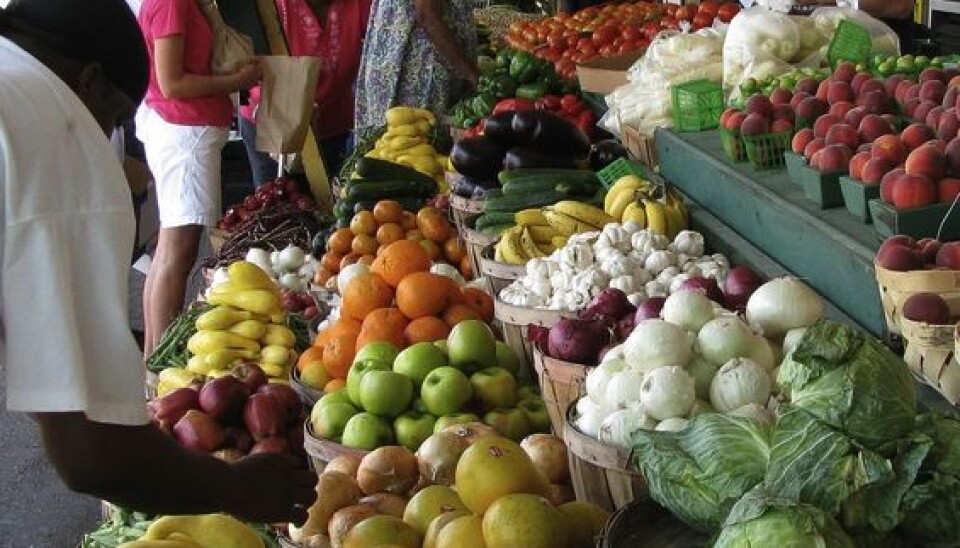
Focus on the locus
Large corporations have started producing organic foods, but American consumers are moving their focus on locally produced food. In Norway people might be too well off for such a revolution.
Denne artikkelen er over ti år gammel og kan inneholde utdatert informasjon.
For a long time the key contribution consumers could make towards a sustainable food industry was to purchase organic foods.
One of the characteristics of organic foods had been small producers and small harvests, and keeping things small scale has helped ensure that products are as healthy and environmentally friendly as possible.
But once small firms start making profits, large ones are quick to follow in their footsteps. Giant manufacturers and retailers have begun to offer organic goods: Kellogg’s offers organic cornflakes and Wal-Mart has its own brands of “natural foods”.
Consumers are sceptical.

“There are many who doubt that such big companies can be organic, so when they entered the market the products lost some of their attraction.”
So says Yuko Onozaka, associate professor at the University of Stavanger Business School in Norway.
She works with consumer motivations and behaviour in relation to food and is in the process of completing a larger project looking into the “local revolution”.
“People started to look for more secure and environmentally friendly alternatives, and what they found was so-called short-distance food, in other words local farm produce. This is taking over as the new ecological food,” says Onozaka.
Control of what we eat
Onozaka has studied developments in the U.S. food industry, where the focus on ecological, organic foods has had an impact. Globally, annual turnover in the organic food industry is now valued at over $60 billion.
Linking such sums in the minds of consumers to ethical and environmentally friendly trade can be difficult:
“People are unsure about how to interpret a connection between giant corporations on the one hand, and organic food on the other. So buying locally grown food became a way of supporting local farmers and bolstering local businesses,” says Onozaka.
She says that about 40 percent of the American population is concerned with ethical trade and sustainable industries, and the focus on short-distance food has grown from this segment in the past five years.
“It’s all about sustainability: short-distance food is a way of maintaining a local community, a way of controlling what gets inside you. Much of what we eat is imported from other countries. With local, short-distance food the consumer feels that she or he is in control,” she explains.
Fairtrade has gone local
The eco-labels are not the only part of the local trend. Fairtrade, which has traditionally been more concerned about exploitation and poverty than environmentalism and healthy foods, has also entered the fray.
“Fairtrade has traditionally been about developing countries but we now see a new movement in the USA that could be referred to as domestic Fairtrade,” says Onozaka.
“The idea is that local farmers also suffer in competition with the mega-corporations, just as small farmers do in poorer countries. Consumer concerns about domestic Fairtrade can thus become a motivation for supporting local businesses.
Willing to sacrifice for the environment?
Nevertheless, Onozaka emphasizes that a focus on local foods poses challenges. Among other things, different regions of the USA have different growth seasons and climates. So it’s easier to be conscientious about consuming local-grown goods in California than in for instance North Dakota, because farmers on the more temperate West Coast can produce bigger crops and offer a bigger variety of local foods.
One solution to the problem is to limit what you eat to what can be produced locally, where you live. But are you really willing to do so?
“Are people going to stop eating strawberries in the winter because they have to be flown in from afar − or are grown by building and heating greenhouses − in both cases leaving a large carbon footprint?”
“We see indications that people don’t view local food as positive, despite the merits, but this is something we need to study more to get a proper answer,” explains Onozaka.
Norwegian politics hamper a similar development
Onozaka has studied this local revolution in the USA, but wishes to make a comparative study among the USA, Norway and Japan to see how local and organic markets function in other countries.
She thinks Norway will come out less green than the USA in such a study:
“In Norway you have a different situation: food prices are very high and people are generally satisfied with the quality of consumer goods. Under such circumstances there are few incentives for consumers to switch toward short-distance food,” she reasons.
Onozaka says there is a much bigger market for organic food in other European countries, for instance in Great Britain and Denmark, which eventually can be turned towards local produce if they follow the same trend as in the USA.
“Norway can actually be the exception here in Europe by being a place where it is hard to trigger the local revolution. If people have faith that state regulations are working, the chances of a consumer-driven change in the food industry are small,” says Onozaka.
____________________________________
Read this article in Norwegian at forskning.no
Translated by: Glenn Ostling






























